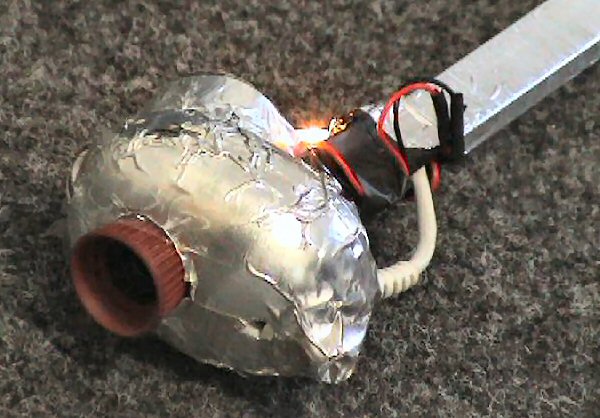Please wait a few moments while we process your request

Sandro Canavezzi de Abreu
VOID
The interactive installation VOID has evolved from a prototype of a physical interface called M(n)EMO, which Canavezzi devised within a residency at the Podewil contemporary art centre in Berlin while working with the group Codelab. The installation is defined by a user's interaction with a closed sphere 70 centimetres in diameter whose interior can be "visited" by a prosthesis. This "arm," which is equipped with a stereoscopic camera, a light source and a microphone, can move around the sphere and collect data. The audio and visual information resulting from the user's path through this sphere is processed and emitted in the space.
As the sphere's internal surface is a mirror, the images produced prove to be paradoxical and disconcerting. Also, thanks to glasses adapted for a stereoscopic projection, users believe they see three-dimensional objects that really don't exist at all. In this installation, users are invited to occupy an inaccessible space and come to realize that the space is an instrument for creating visuals and sound. This self-reflective device helps users analyze their observational situation and recognize that the interface itself is generating meaning.
On another level, the user's movements recall those in certain medical exams that probe the body. Indeed, the sphere acquires an organic feel once users begin their exploration. This organic feel is also confirmed by the images created by the endoscopy. These images resemble those generated by an intrusion into the channels of the human body. This analogy leads to an intimate and disquieting experience.
As the sphere's internal surface is a mirror, the images produced prove to be paradoxical and disconcerting. Also, thanks to glasses adapted for a stereoscopic projection, users believe they see three-dimensional objects that really don't exist at all. In this installation, users are invited to occupy an inaccessible space and come to realize that the space is an instrument for creating visuals and sound. This self-reflective device helps users analyze their observational situation and recognize that the interface itself is generating meaning.
On another level, the user's movements recall those in certain medical exams that probe the body. Indeed, the sphere acquires an organic feel once users begin their exploration. This organic feel is also confirmed by the images created by the endoscopy. These images resemble those generated by an intrusion into the channels of the human body. This analogy leads to an intimate and disquieting experience.
Sylvie Parent © 2003 FDL








